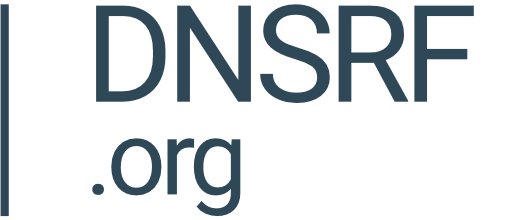How much will blockchain identifiers clash with traditional DNS domains?

By Nathan Alan
The idea of using blockchain technology to create online addresses for websites has moved from theoretical to real in recent years.
The operator of France’s .fr registry, AFNIC, funded DNSRF to look into what this may mean in terms of how these new addresses interact with the traditional domain name system (DNS).
By developing a system that sits outside the traditional DNS overseen by ICANN, there is a risk that the same words will end up being used by different organisations, sending people off to different websites in unpredictable ways.
First off, in order to maintain a distinction between two very different systems, we have used the term “blockchain identifiers” to describe the new-style addresses, and the longstanding term “domain names” to refer to the online addresses created through the DNS.
We then looked over 11 million blockchain identifiers (from the six largest blockchain providers) to see how they are currently interacting with the roughly 350 million domain names. This a very large dataset, so we boiled down the results to specific areas:
- Where a top-level blockchain identifier already exists as a generic top-level domain under the ICANN/DNS system. This is the most significant name collision as it means there will be potentially millions of other collisions under each e.g. [blockchain1].example, [blockchain2].example, and so on.
- Where second-level blockchain identifiers - e.g. example.[blockchain] - are already present within France’s .FR registry. This is a direct conflict that has largely unknown consequences.
- Where new potential top-level collisions may happen in future based on blockchain identifiers that already exist and top-level domains that are likely to exist soon under ICANN’s new gTLD application round.
Data sources
Before we get to the results, a word on sources and methods. Our analysis is based on the following datasets:
- Active gTLD zone data obtained from ICANN zone files.
- Blockchain identifiers sourced from Freename which originate from six different blockchain domain providers:
- DecentraName (DNAME)
- Ethereum Name Service (ENS)
- Freename Domains (FNS)
- Handshake
- NameWrapper
- Unstoppable Domains (UD)
- A list of 10 potential new gTLDs that may be applied for in the upcoming ICANN round. Specifically: .login, .cart, .wallet, .crypto, .verify, .nft, .coin, .blockchain, .quantum, .identity. This list was created based on our experience with the DNS and conversations with ICANN over expected new gTLD applications.
In total, we identified 11.6 million blockchain identifiers which comprises 4.7 million top-level registrations and 6.9 million second-level registrations.
Methodology
For top-level collisions, we took the 4.7 million top-level blockchain identifiers and compared them to the roughly 1,110 existing ICANN generic top-level domains, producing a like-for-like match.
For second-level collisions, we compared the 6.9 million second-level blockchain identifiers with the 4M+ registered domains under .fr, available from the Afnic open data set as of February 2025, searching for identical names at the second level.
For potential top-level collisions, we compared our 10 potential new generic top-level domains (gTLDs) to existing top-level blockchain identifiers and then counted the number of second-level blockchain registrations under each potential conflict to assess the impact.
Key Findings
There are significant overlaps at all layers.
Blockchain identifiers already exist that directly conflict with established names in the domain name system (DNS), raising concerns about name collisions and user confusion.
These collisions are likely to increase with the introduction of new gTLD applications, particularly in categories such as finance (.wallet, .coin), identity/security (.verify, .identity), and digital assets (.crypto, .nft, .blockchain).
Results
When it comes to gTLD Collisions, half of the providers we looked at (3 out of 6) had at least one direct conflict with an existing top-level domain. Given that, on average, there are 222,500 domains under each top-level domain (and 160 million under .com), this means there are likely already millions of name conflicts between the two systems and the potential for many more as the systems grow.
Of the three providers that we found had created top-level identifiers that were the same as gTLDs, Freename had the most with 8 direct conflicts; then DecentraName with 4 and lastly Handshake with 1.
They were:
- Freename (8) - .free, .visa, .netflix, .gucci, .godaddy, .nike, .porn, .online
- DecentraName (4) - .ing, .music, .kids, .realtor
- Handshake (1) - .desi
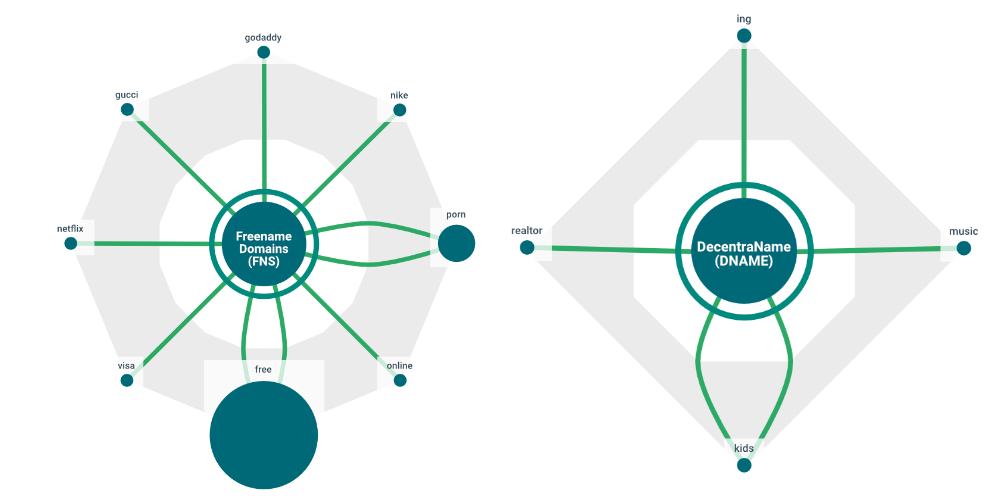
When it came to second-level blockchain identifiers conflicting with existing .fr domain names, we found hundreds of direct collisions. The most occurred under the top-level blockchain identifier .crypto (which doesn’t currently exist in the DNS as a top-level domain - but see below), which had 150 identifiers that collided with the same names under .fr.
You can see the reminder in the chart below. Again, as the number of domains under either system grows, the likelihood of collisions also increases.
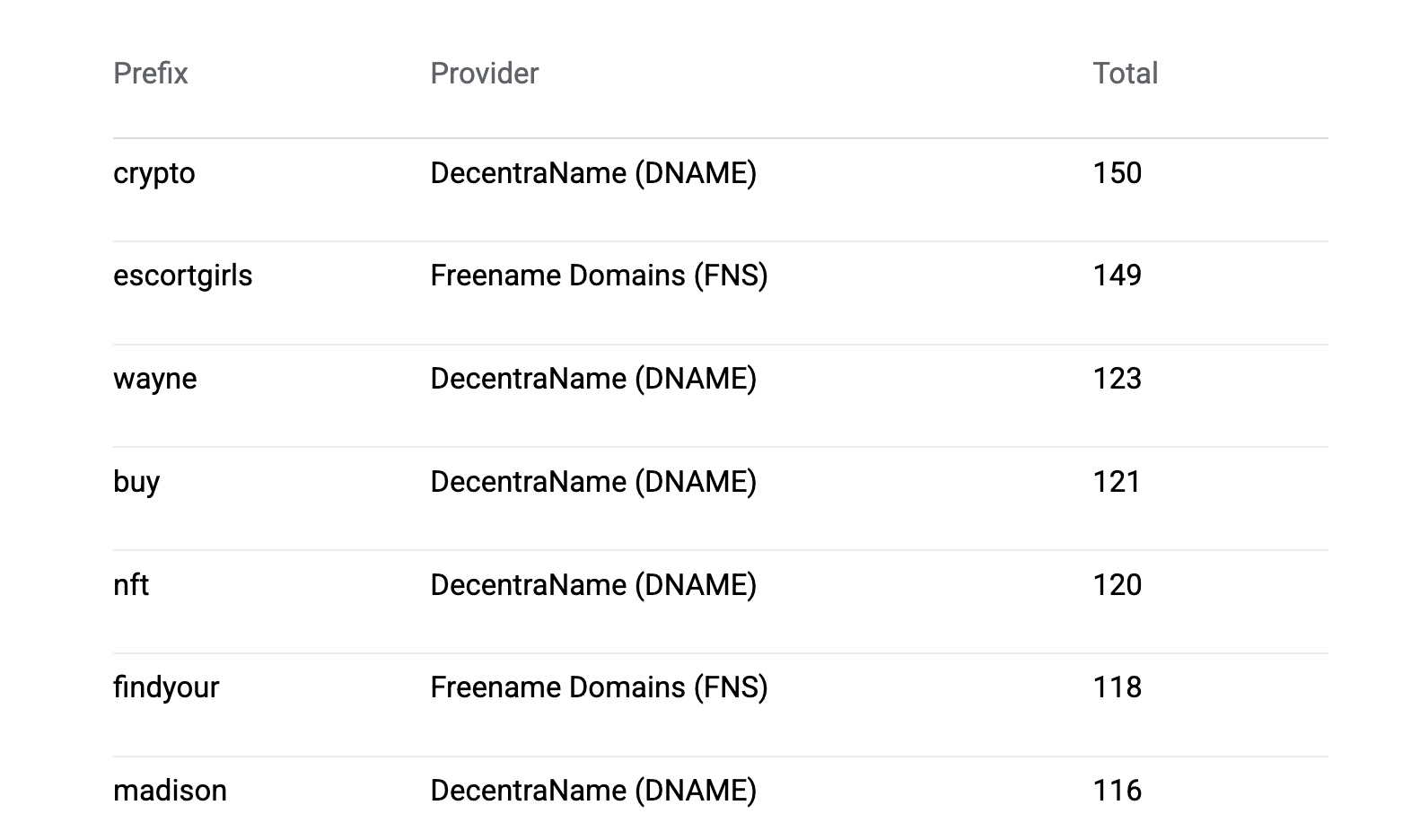
And lastly, when it came to potential gTLD collisions - where existing blockchain identifiers would conflict with expected future applications for gTLDs - we found that four of the 10 we identified as like to be applied for already exist as blockchain identifiers; each with hundreds of thousands of identifiers underneath them.
Here’s a table of our findings.
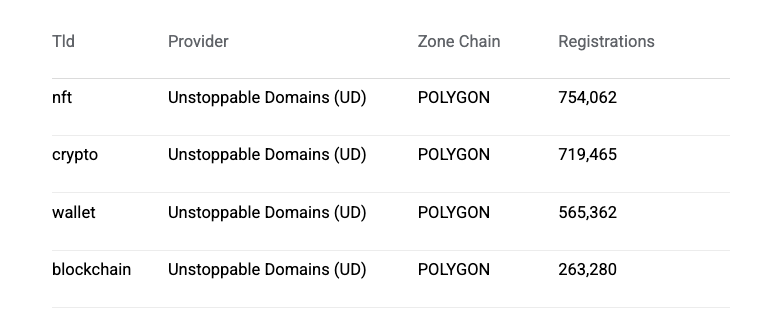
Conclusions and future work
It is clear from our analysis that there is already a large number of collisions at different levels between blockchain identifiers and domain names, and that that number will almost certainly grow, particularly when new top-level domains are applied for and added to the Internet through ICANN’s new gTLD process.
Our work has been focussed solely on data comparison and so we have not looked at the potential impact of collisions on Internet users or policy approaches that may serve as a fix.
Similar work in future would help to clarify the situation further - and so help in developing answers - including:
- Mapping blockchain identifier providers to get a better sense of how the industry operates as well as its size and composition
- A risk assessment framework that would extend this project to develop a more structured analysis of risks associated with name collisions, with the goal of identifying what would be high-risk collisions
We would like to thank AFNIC for funding this initial data-based assessment of the interaction between blockchain identifiers and the domain names and look forward to building on it in future projects.

